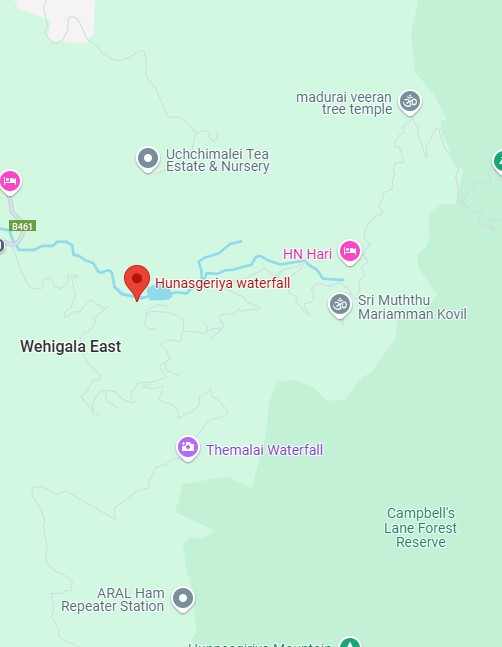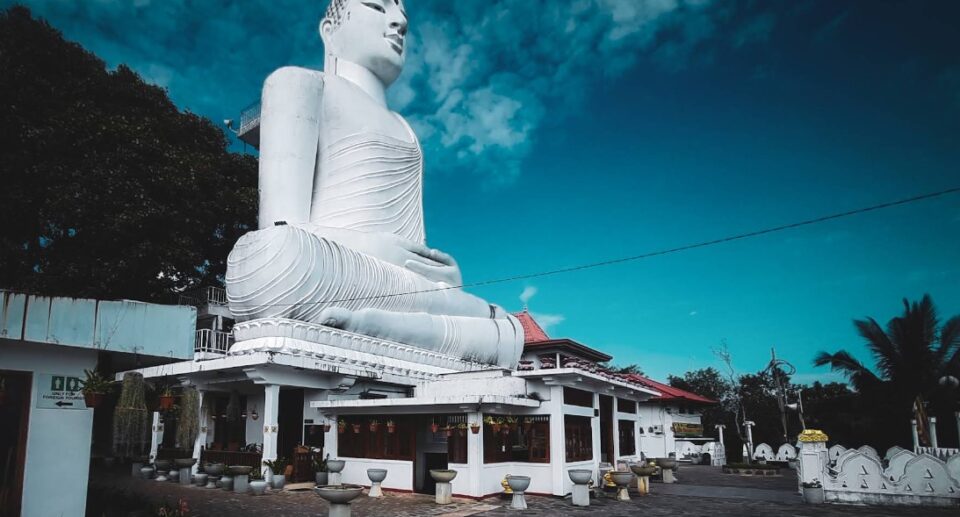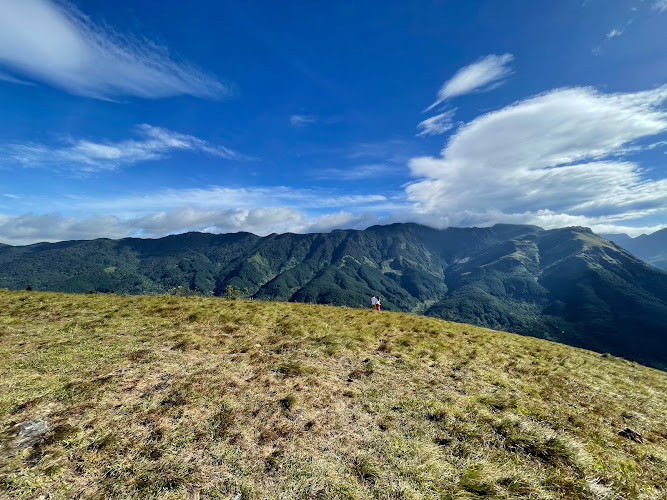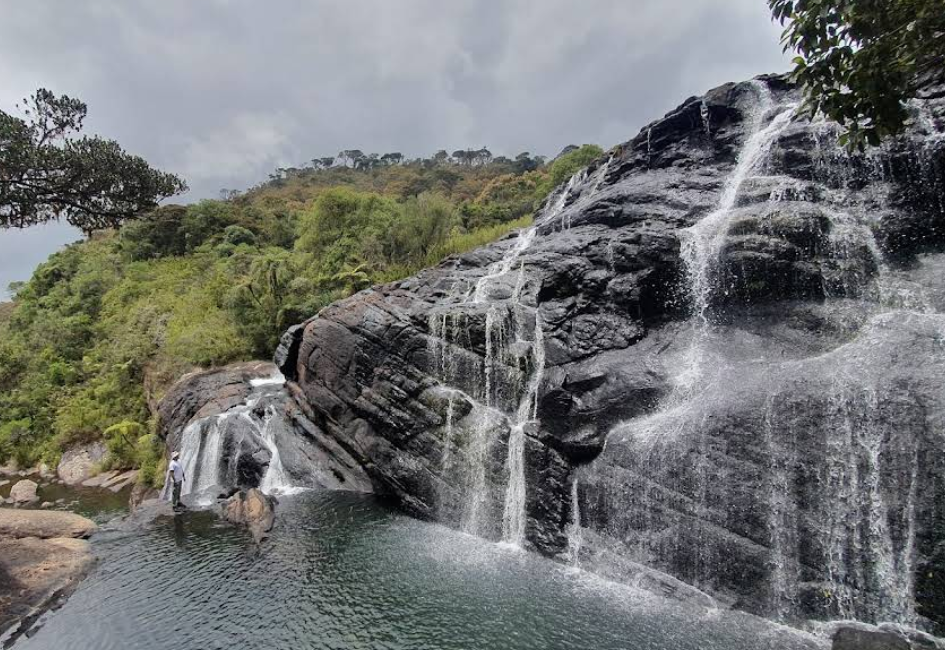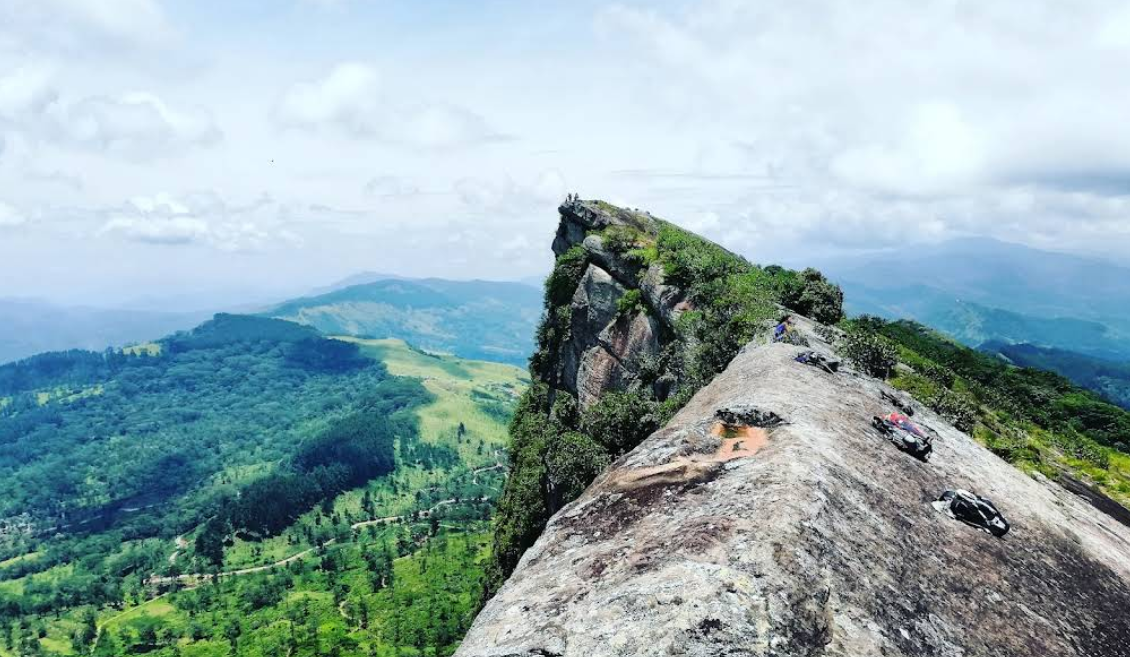Hunnasgiriya Waterfall: A Tranquil Treasure in Sri Lanka’s Central Highlands
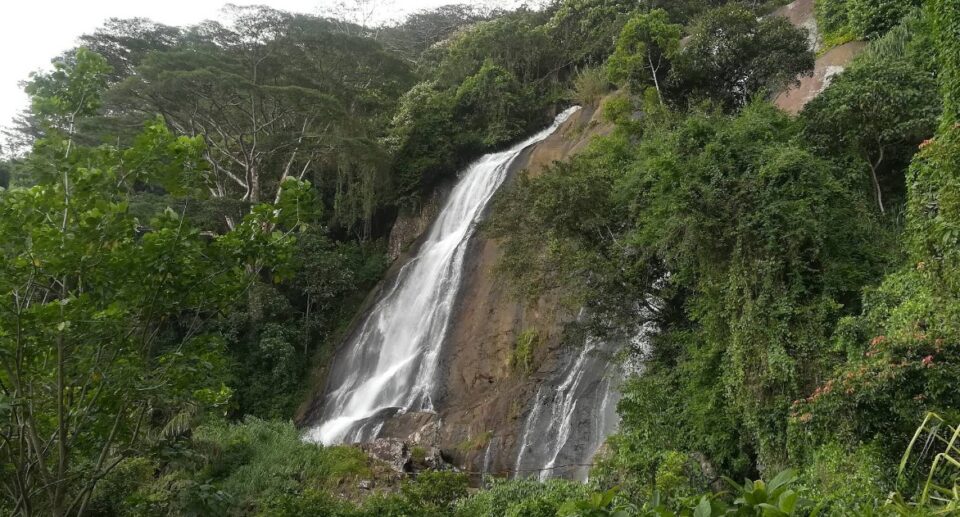
Hidden away in Sri Lanka’s foggy hill country, out of sight from towns and new settlements, lies a hidden gem: Hunnasgiriya Waterfall. Also referred to as “Hunas Falls,” this stunning cascade is located close to the tranquil village of Elkaduwa in the Matale District, just 22 kilometers from the cultural city of Kandy. As an individual approaches the falls, the air grows cooler, the countryside greener, and a sense of peace envelops the countryside. Hunnasgiriya Waterfall, though not among Sri Lanka’s most prominent or touristy waterfalls, possesses a unique charm that blends natural marvel, eco-diversity, and secluded tranquility.
Geographic and Ecological Context
Hunnasgiriya Waterfall is found in the central highlands of Sri Lanka, which is famous for its cooler climatic conditions, tea estates, and high biodiversity. The waterfall plunges down from the Hunnasgiriya hill range, which forms part of the Knuckles Mountain Conservation Forest. The stream on which the waterfall lies is from close Hunasgiriya Peak, descending downwards finally over a rock cliff and forming a picturesque 48-meter-high fall.
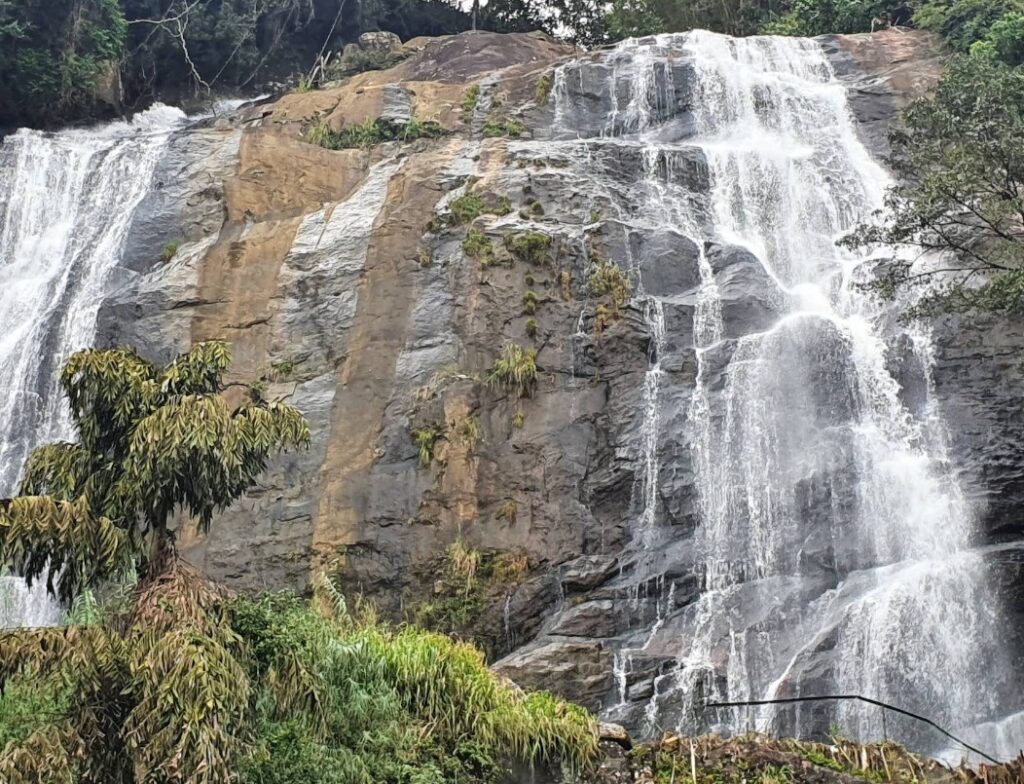
The land is encrusted with dense forests, scattered with endemic and migratory flora and fauna. The view is one of the most ecologically significant in the country, with rare orchids, ferns, medicinal plants, and multi-colored butterflies. Other types of birds may be spotted in the area, and it is a paradise for bird watchers and nature photographers. The open air, smell of damp earth, and birdsong and patter of water ensure an entire exposure to nature.
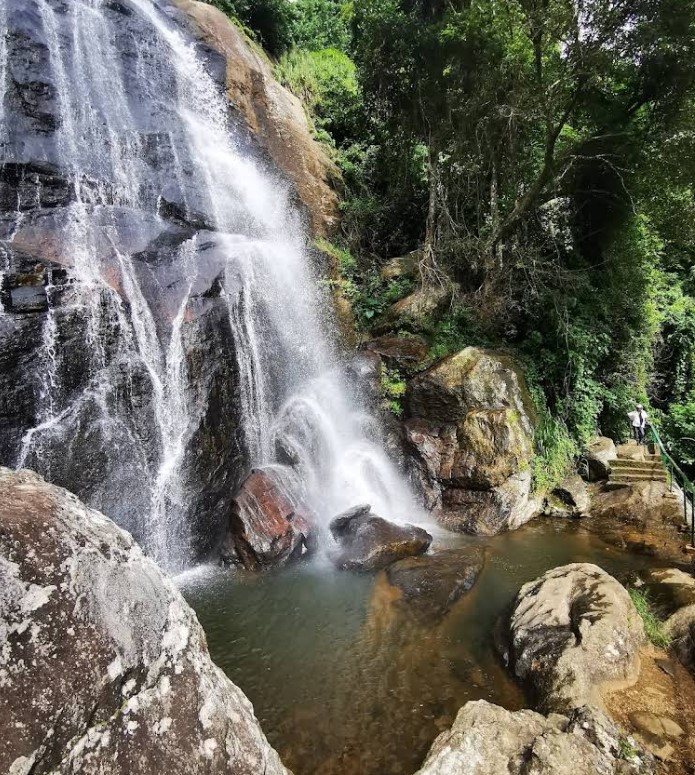
Access and Infrastructure
It is a stunning drive or trek along the middle highlands to access Hunnasgiriya Waterfall. The most convenient route is from Kandy via the A26 road to Matale. After one gets to Wattegama, the drivers must turn onto a narrow, winding road passing through tea estates and hilltop villages before one arrives at Elkaduwa. The waterfall is then accessible on a short walking trail.
Adjacent to the waterfall is the Hunas Falls Hotel, a renowned eco-friendly resort that offers visitors a stunning view of the falls and terrain. The hotel is well placed within nature, and the location being near the waterfall makes it suitable for tourists who wish to see the area. Some tourists decide to spend a day or two here to experience the whole thing about being in peace and tranquility in the area.
Tourism and Visitor Experience
Despite its relatively secluded location, Hunnasgiriya Waterfall attracts foreign as well as local tourists who seek to enjoy nature-based tours outside Sri Lanka’s more commercialized attractions. The fall is especially preferred by nature enthusiasts, trekkers, couples on honeymoon, and family groups. Unlike some of Sri Lanka’s other waterfalls, Hunnasgiriya is not thronged, and it is feasible for the visitors to enjoy its beauty peacefully.
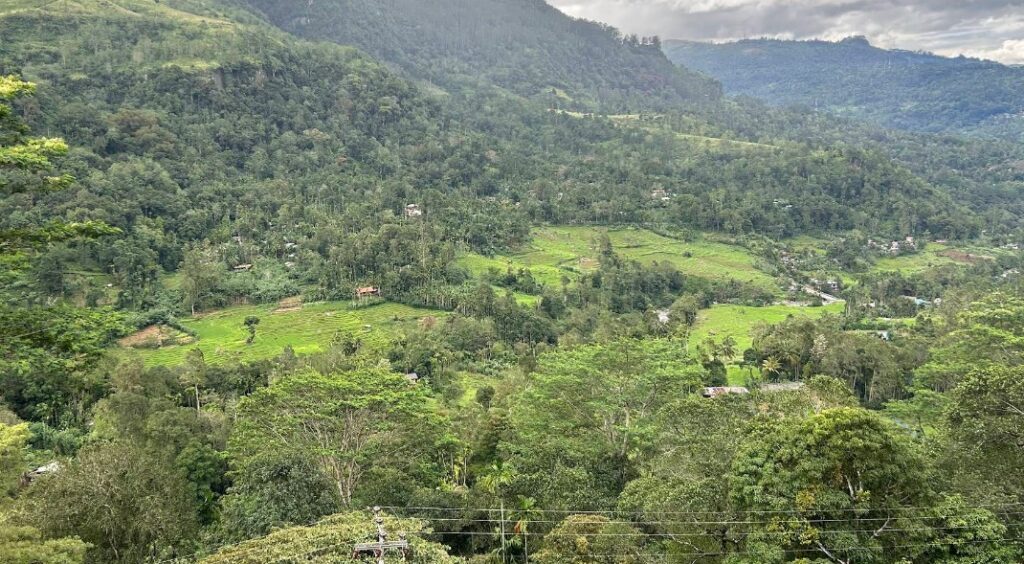
There are several activities for tourists. There are easy to moderate walks along the falls which enable tourists to view several viewpoints that each give a different view of the cascade. When raining, water levels rise, and the falls become even more powerful. There is a small pool at the base of the falls that invites adventurous tourists to take a swim, then be cautious because the rocks are slippery.
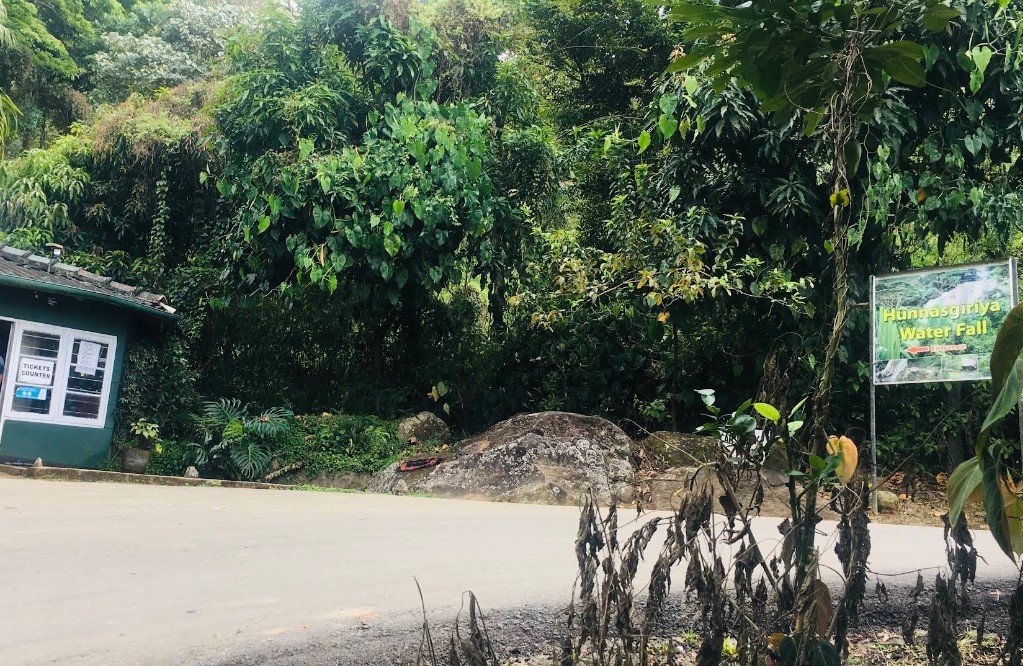
The surrounding Hunasgiriya Estate is also worth a visit. Spread with vast tea gardens, spice gardens, and flowering plants, the estate provides guided walks and study chances in regard to Sri Lanka’s world-famous tea culture.
Environmental Significance
Hunnasgiriya Waterfall is located in an eco-sensitive zone. It is in close proximity to the Knuckles Mountain Range, which is a UNESCO World Heritage Site. The forest region as well as the waterfall itself are biodiverse. The conservation value of the location cannot be stressed enough, given that it is a watershed for many rivers and hosts many endemic as well as threatened species.
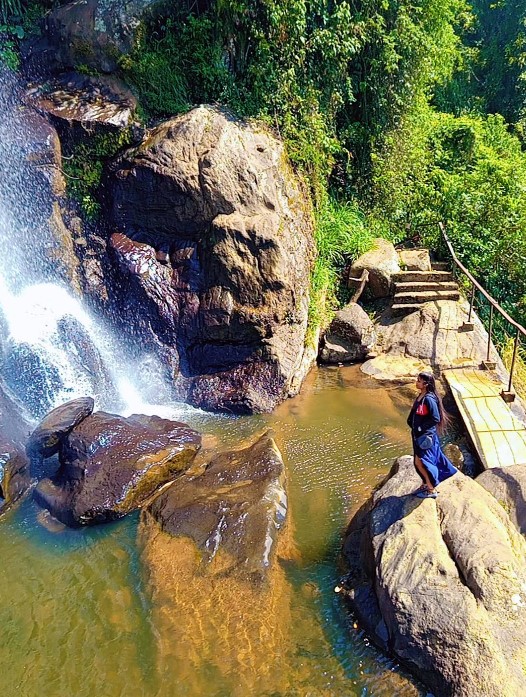
But like most of nature’s wonders in the world, Hunnasgiriya too does not escape the effects of human intervention. Global warming, tourism litter, and deforestation are dangers that assail the ecosystem. Fortunately, because the region is relatively less commercialized, it has managed to remain relatively untouched. The local environmental groups and resorts like Hunas Falls Resort take an important step in ensuring proper sustainable tourism practices like garbage control, tree planting, and educating people about conserving nature.
Cultural and Historical Value
While Hunnasgiriya Waterfall is appreciated for its view, the region also possesses cultural and historical value. Matale District has been a region of cultivation and spiritual retreat since historic times, with many local legends and customs built around the land.
The surrounding villages still maintain their old world lifestyle, growing spices like pepper and cardamom, and making handmade articles out of forest materials.
There are also old shrines and temples scattered on the hills, an additional touch to Sri Lanka’s Buddhist heritage. These cultural offerings add depth to a visit to Hunnasgiriya, where travelers can delight not only in nature but also in the timeless connection of people to land.
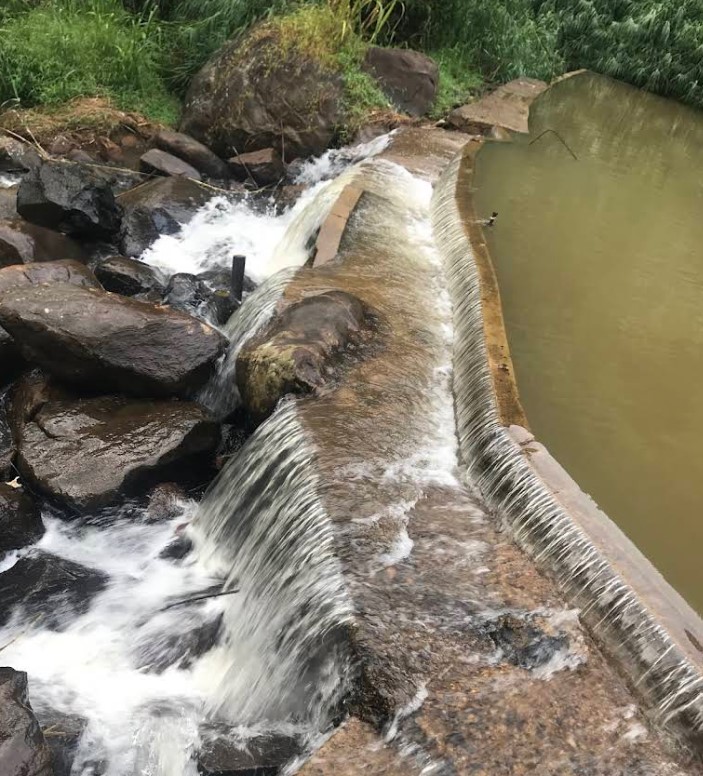
Best Time to Visit
The best time for a visit to Hunnasgiriya Waterfall is from December to April, when it is dry in most places and there is clear sky. The falls are best in monsoon season (May to September), when rain fills the cascade’s volume and intensity into full view. Visitors must exercise caution during this season as the routes may be slippery and river flow is strong.
The most peaceful time to go is during the still morning and early afternoon, and mist often creeps up from the hills with sun glinting off the surface of the water. It’s ideal for photography and quiet contemplation.
Hunnasgiriya Waterfall is a pristine paradise that reflects the wonders of Sri Lanka’s natural landscape. Its peaceful setting, peppered by lush hills and cooling mist, is a tranquil refuge from the trappings of society. Be you a traveler seeking adventure, an ecologist seeking endemic species, or a fatigued spirit seeking peace and quiet, Hunnasgiriya is a unique destination to be.
As Sri Lanka grows as a hub of foreign tourism, it is places like this that remind us of the delicate balance between development and conservation. Through sustainable tourism practices, community support, and environmental respect, the Hunnasgiriya Waterfall can be kept on continuing to inspire awe and wonder in generations to come.
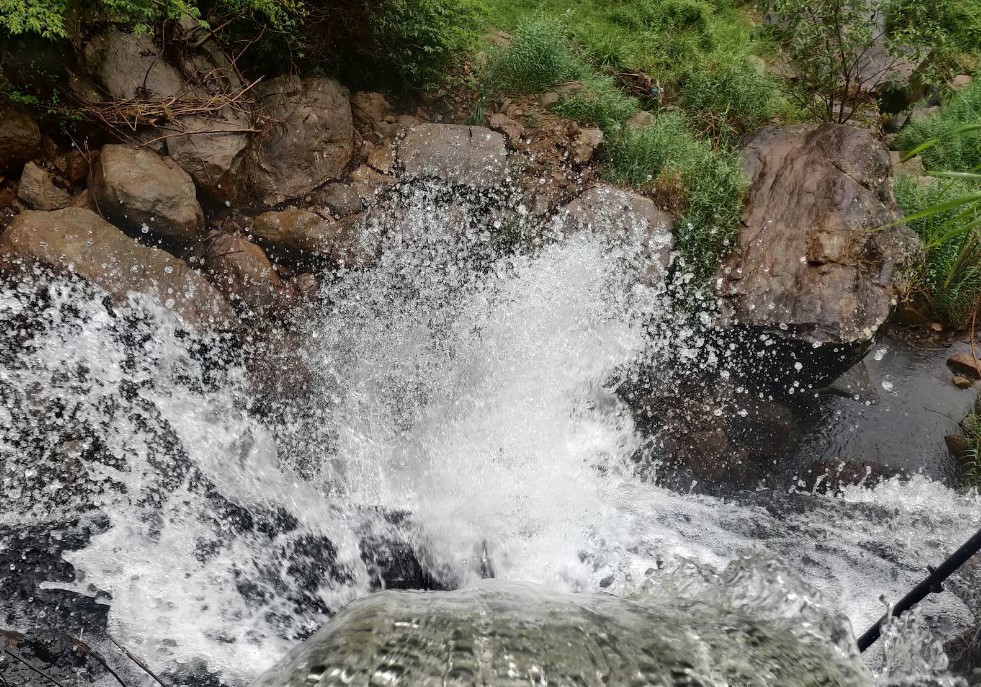
Location Overview
- Name: Hunnasgiriya Waterfall (Hunas Falls)
- Nearby Towns: Kandy (22 km), Matale (18 km), Elkaduwa (closest village)
- Province: Central Province, Sri Lanka
From Kandy (approx. 22 km)
- Start from Kandy city center.
- Take the A26 road towards Wattegama.
- After reaching Wattegama, turn onto Elkaduwa Road.
- Follow the winding road through tea plantations and forested hills.
- You’ll reach Elkaduwa village.
- From Elkaduwa, drive or walk toward the Hunas Falls Hotel – the waterfall is located nearby, just a short walk from the hotel grounds.
By Public Transport
- Take a bus from Kandy to Matale (frequent service).
- At Wattegama, switch to a local bus heading to Elkaduwa.
- From Elkaduwa, you may need to walk or hire a tuk-tuk to reach the waterfall area.
- Travel Tips
- Best visited during the wet season (May to September) for a fuller waterfall.
- Bring comfortable footwear and a raincoat if hiking.
- The Hunas Falls Hotel nearby is a great place to relax or stay overnight.
- The road can be narrow and winding, especially toward the end—drive carefully or hire an experienced local driver.

